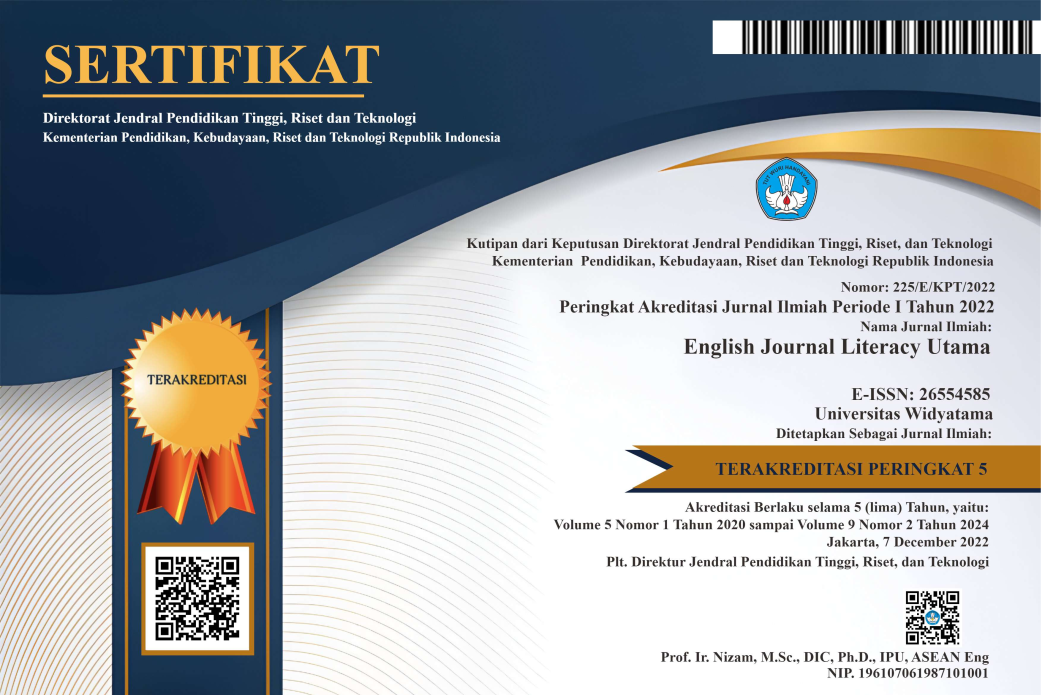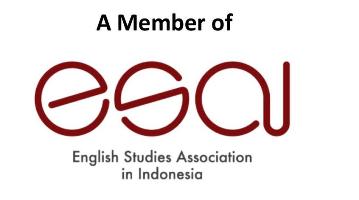HOW THE PARTICIPANTS IN MENTAL PROCESSES INVOLVING THE VERBS “MAKE,” “TAKE,” AND “HAVE” REPRESENT THE MEANING OF CLAUSES: GRAMMATICAL METAPHORS IN A FUNCTIONAL GRAMMAR STUDY
DOI:
https://doi.org/10.33197/ejlutama.v8i1.242Keywords:
functional grammar, Mental process, congruent formAbstract
The transitivity system, in functional grammar, introduces seven processes. One of them is “Mental Process” that consists of three types: (1) affective, which represents feeling, liking, loving, and fearing, (2) cognitive, which represents the process of thinking, knowing, and understanding, and (3) perceptive, which involves the process of perceiving through the five senses such as seeing, and hearing. Participants engaged in the mental processes are Senser, someone who can sense, and Phenomenon, something that can be sensed. However, there is another participant, namely Range, when the mental process involves a grammatical metaphor. Grammatical metaphors occur in nominal groups that are paired with verbs that have no lexical meaning or are semantically empty, in this case, the verbs “make,” “take,” and “have.” This research aims analyse how the participants in the mental processes represent the meaning of the clauses when they are categorized as grammatical metaphors. The data source is the Corpus of Contemporary American English (2012-2017). This research shows that (1) the participants in the mental processes represent the meaning of clauses because they are categorized as grammatical metaphors, (2) because of grammatical metaphors, the participants in the mental process are the ranges, and (3) when the clauses do not involve the grammatical metaphors, the participants in the mental processes are the phenomenon, as commonly structured in the mental processes.
Key words: Mental process, grammatical metaphor, congruent form, non-congruent form
References
Amberber, M., Baker, B., & Harvey, M. (2010). Complex Predicates: Cross-linguistic Perspectives on Event Structure. Cambridge: Cambridge University Press. doi: https://doi.org/10.1017/CBO9780511712234.004
Bloor, T., & Bloor, M. (2004). The Functional Analysis of English (2nd ed.). London: Routledge.
Gerot, L., & Wignel, P. (1995). MAKING SENSE OF FUNCTIONAL GRAMMAR. Sydney: Gerd Stabler.
Halliday, M. A., & Matthiessen, C. M. (2004). An Introduction to Functional Grammar (3rd ed.). London: Edward Arnold.
Halliday, M. A., & Matthiessen, C. M. (2014). HALLIDAY'S INTRODUCTION TO FUNCTIONAL GRAMMAR (4th ed.). New York: Routledge.
Hardani, Hikmatul, N., Andriani, H., Asri, R., Ustiawaty, J., Fatmi, E., . . . Rahmatul, R. (2020). METODE PENELITIAN KUALITATIF & KUANTITATIF. Yogyakarta: Pustaka Ilmu.
Ismail, D. (2020). “Participants of Material Processes in Grammatical Metaphors Involving the Verbs Make and Take: A Systemic Functional Linguistic Study”. Indonesian EFL Journal, 6(1), 55-62. doi:https://doi.org/10.25134/ieflj.v6i1.2638
Jaelani, A., & Sujatna, E. T. (2014). The Sequence of Ideational Grammatical Metaphor Wording Technique in Historical Text: A Systemic Functional. IJALEL International Journal of Applied Linguistics and English Literature, 3, 194-200. doi:https://doi.org/10.7575/aiac.ijalel.v.3n.2p.194
Rahmasari, G., & Nurhayati, I. K. (2019). IMPLICIT PARTICIPANTS IN MENTAL PROCESS: A FUNCTIONAL GRAMMAR ANALYSIS. JALL (Journal of Applied Linguistics and LIteracy, 3(2), 153-160. doi:http://dx.doi.org/10.25157/jall.v3i2.2421
Sujatna, E. T. (2013). Understanding English Syntax. Bandung: Unpad Press.
Thompson, G. (2014). Introducing Functional Grammar (3rd ed.). New York: Routledge.
Downloads
Published
Issue
Section
License
Copyright (c) 2024 Dede Ismail, Anum Dahlia

This work is licensed under a Creative Commons Attribution-NonCommercial-ShareAlike 4.0 International License.
Creative Commons Attribution-ShareAlike 4.0 International License















